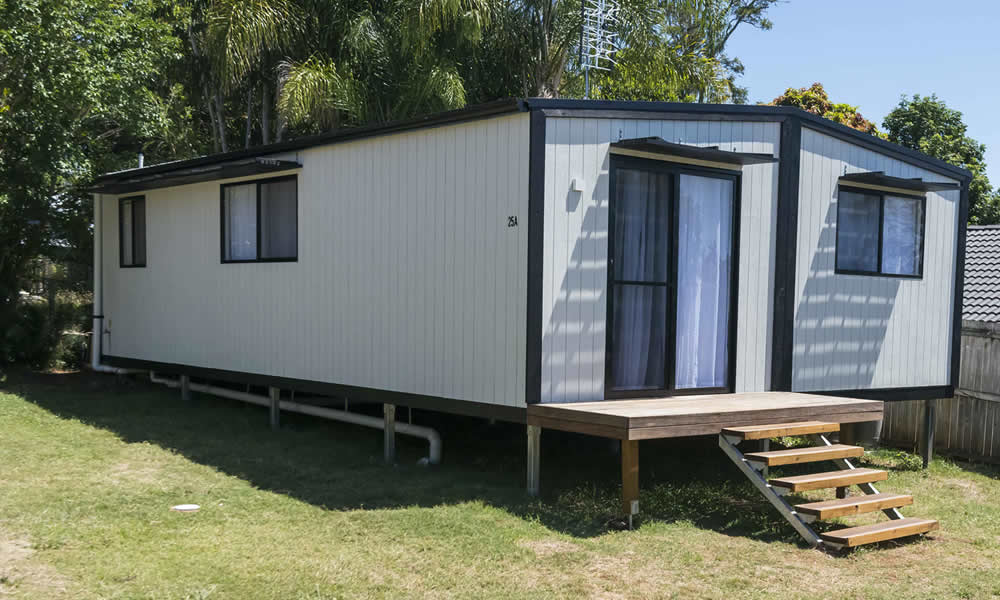When it comes to granny flats in Australia, naturally the first question a lot of homeowners ask themselves is whether they can build a portable home with no council approval (or if they do need approval, how long does it take/how tedious is the process).
The answer ultimately depends on whereabouts you live in Australia. Some states have strict regulations around building granny flats, tiny homes, and similar structures on your property, while others have more lenient rules.
At Humpy Co., we thought it best to make things easier for you by putting together this brief guide to building portable homes with no council approval in various states and territories across Australia.
Please note, each section featured here simply offers an introductory overview of what the requirements are in that state or territory. For more specific and detailed information regarding granny flat builds with no council approval in your state, we encourage you to contact us directly for more personalised advice.
Can You Build a Granny Flat or Tiny Home on Your Property in NSW?
Yes, indeed you can.
The State Environmental Planning Policy (SEPP) holds all the regulations necessary for constructing granny flats—in-depth guidance on these regulations is readily available. NSW stands as the top state for building granny flats, as the building guidelines are comparatively simple. Additionally, the renting of secondary dwellings is pretty straightforward (which differs from other states throughout Australia!).
Can You Build a Tiny Home on Your Property in Victoria?
In Victoria, granny flats and tiny homes are subject to some of the strictest regulations across the country. However, building a granny flat is still a possibility as long as you’re familiar with the regulations.
First and foremost, you must have a minimum property size of 450sqm. The granny flat, also known as a Dependent Person’s Unit (DPU) or a second dwelling, must be self-contained and have its own entrance. The unit should be intended for use by a dependent person, such as a grandparent, parent, or teenage child of the occupants of the main dwelling—one person can reside in the unit at a time.
Some local councils require that the granny flat be easily removable, while others insist that it be a movable building. This is to facilitate the unit’s removal as soon as the dependent person no longer lives there.
Can You Build a Tiny Home on Your Property in ACT?
Outlined as a “secondary residence”, a granny flat can measure between 40sqm to 90sqm in size. To construct one, your property must possess a minimum land area of 500sqm and sit within a residential zone. It must also conform to water-sensitive urban design principles and meet accessibility requirements. While the flat can be rented out, it’s crucial to offer tenants private outdoor space and at least one designated car park.
Can You Build a Granny Flat on Your Property in Queensland?
Yes, you can. The maximum area permissible for a granny flat in Queensland is subject to your local Council and is generally between 60 to 90 square metres. Recently, there have been new amendments that enable you to lease out your granny flat for a period of three years, negating the prerequisite that it must be inhabited by a ‘member of your household’.
What about in WA, SA, and TAS?
First off, we are sorry to say that Humpy Co. currently does not service Tasmania, Western Australia, and South Australia when it comes to our tiny home range. Despite this, we believe it’s important to be aware of the regulations in these areas. The regulations we list below are by no means comprehensive, so always check with your local council first.
Tasmania
In Tasmania, laws dictate that granny flats can occupy a maximum area of 60sqm, or 30% of the total area of the primary dwelling, whichever is lesser. There are no clear guidelines on the minimum size of the land, leading to a state-wide policy that is undefined and varies across local councils themselves.
South Australia
As for South Australia, the government has simplified the approval process for granny flats. Key regulations include a minimum property size of 600sqm, a maximum floor area for the secondary dwelling of 60sqm, shared utility services with the primary residence, and occupation by an immediate family member.
Western Australia
In Western Australia, properties must be at least 450sqm in size, unless specified otherwise by the local Council. Leasing to non-relatives typically requires local Council approval. The maximum permitted floor area for a granny flat is 70sqm, although allowances of up to 100sqm are sometimes granted in rural areas.
We urge customers from these regions to stay tuned for updates regarding our services. We continue to work towards expanding our reach to better serve all Australian homeowners.
Looking to build a granny flat with no pesky council approval to worry about?
No longer do you need to build a granny flat from scratch, nor do you need to compromise on space with a ‘tiny home.’ At Humpy Co., we’ve developed a system for designing, manufacturing and installing beautiful dwellings at minimal time and expense.
To discuss our home, and work studio range of Humpy Co. house pods, please don’t hesitate to get in touch.

